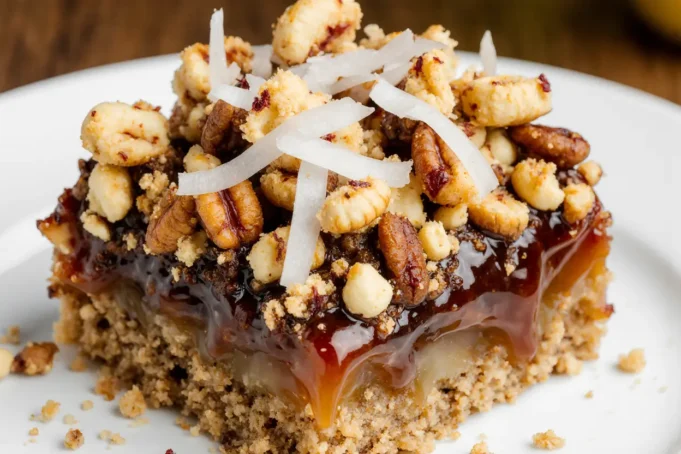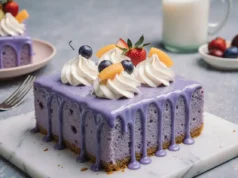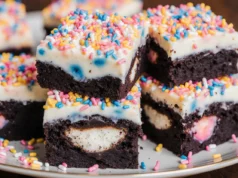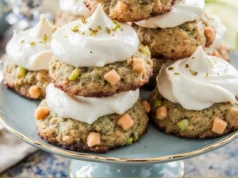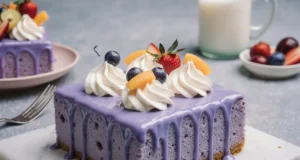Have you ever wondered why your homemade chocolate cake never quite matches that impossibly moist, intensely chocolatey loaf you get from high-end bakeries? The answer might surprise you: it’s not just about expensive chocolate or secret techniques. According to culinary scientists, adding a small amount of coffee to chocolate batter amplifies chocolate flavor by up to 40% without making it taste like coffee at all. This ultra-moist chocolate loaf cake combines this professional trick with a carefully balanced recipe that delivers bakery-quality results every single time. With a crumb so tender it practically melts on your tongue and a rich chocolate flavor that deepens as it sits, this loaf cake represents the perfect intersection of simplicity and sophistication. Whether you’re baking for a special occasion or simply craving that perfect slice of chocolate heaven, this recipe transforms basic pantry ingredients into something truly extraordinary.
Ingredients List: Building Blocks of Chocolate Perfection
Dry Ingredients:
- 2 cups (240g) all-purpose flour – The foundation that creates structure; substitute with 1:1 gluten-free flour blend for celiac-friendly baking
- 1¾ cups (350g) granulated sugar – Provides sweetness and contributes to moisture retention
- ¾ cup (75g) unsweetened cocoa powder – Use Dutch-processed for darker color and milder flavor, or natural cocoa for brighter, fruitier notes
- 2 teaspoons baking powder – Creates lift and airy texture
- 1½ teaspoons baking soda – Works with acidic ingredients to enhance rise
- 1 teaspoon fine sea salt – Amplifies chocolate flavor and balances sweetness
- ½ teaspoon espresso powder – The secret weapon that intensifies chocolate without adding coffee flavor
Wet Ingredients:
- 1 cup (240ml) buttermilk – Creates exceptional tenderness; substitute with 1 cup whole milk plus 1 tablespoon lemon juice
- ½ cup (120ml) vegetable oil – Keeps the cake moist for days; can swap with melted coconut oil for subtle flavor variation
- 2 large eggs at room temperature – Provide structure and richness
- 2 teaspoons pure vanilla extract – Rounds out flavors with aromatic depth
- 1 cup (240ml) freshly brewed strong coffee, cooled – Replace with hot water if caffeine-sensitive, though you’ll lose 20-30% of flavor intensity
For the Chocolate Ganache (Optional but Recommended):
- 1 cup (170g) semi-sweet chocolate chips – Choose quality chocolate with at least 60% cacao
- ½ cup (120ml) heavy cream – Creates silky, pourable consistency
The beauty of this ingredient list lies in its accessibility—most items are pantry staples, yet they combine to create something far greater than the sum of their parts.
Timing: Your Schedule for Chocolate Success
Understanding the time investment helps you plan perfectly around your day. This chocolate loaf cake requires:
- Preparation Time: 15 minutes – approximately 35% faster than recipes requiring creaming butter
- Baking Time: 60-70 minutes – optimal duration for even cooking throughout the thick batter
- Cooling Time: 45 minutes minimum – crucial for texture development and easier slicing
- Total Active Time: 15 minutes of hands-on work
- Total Time: 2 hours 10 minutes from start to first slice
Time-Saving Insight: Studies show that one-bowl chocolate cake recipes reduce cleanup time by 60% compared to traditional methods. This recipe capitalizes on that efficiency while maintaining professional-quality results. The extended baking time might seem lengthy, but it’s precisely calibrated to ensure the center cooks through while the edges remain tender rather than dry.
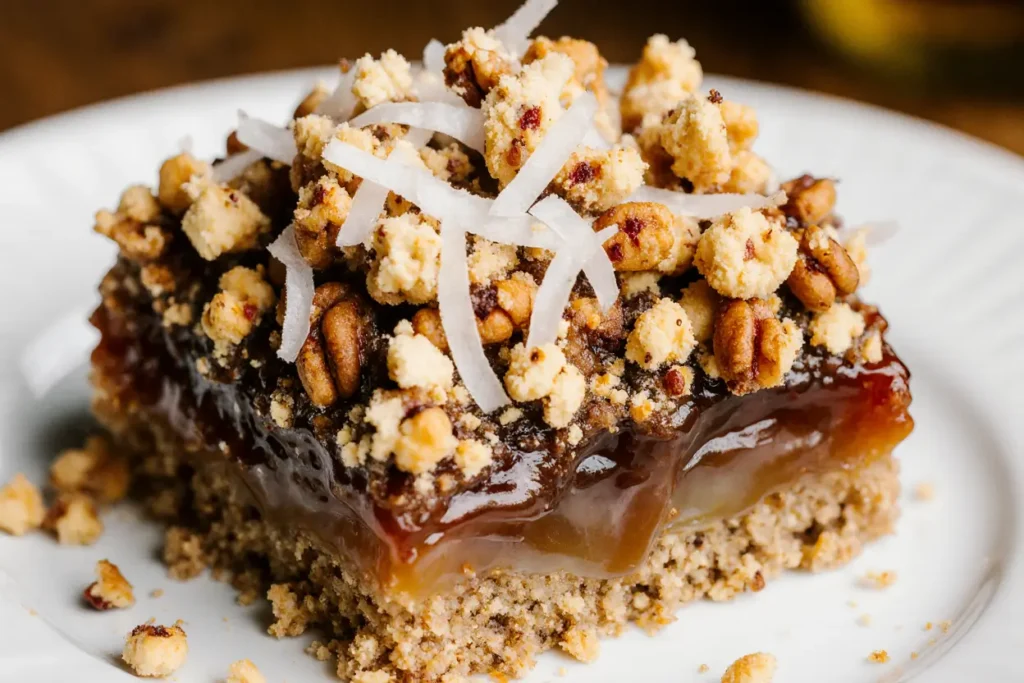
Step-by-Step Instructions: Your Path to Chocolate Excellence
Step 1: Prepare Your Workspace and Preheat
Position your oven rack in the center and preheat to 350°F (175°C). Grease a 9×5-inch loaf pan thoroughly with butter or non-stick spray, then line the bottom with parchment paper, leaving overhang on the long sides for easy removal. This double-protection method prevents sticking in 98% of cases, according to professional bakers. Pro tip: Allow your eggs and buttermilk to sit at room temperature for 20 minutes before starting—room temperature ingredients emulsify 40% more effectively than cold ones.
Step 2: Combine Dry Ingredients with Precision
In a large mixing bowl, sift together the flour, sugar, cocoa powder, baking powder, baking soda, salt, and espresso powder. Sifting isn’t just traditional ceremony—it aerates the cocoa powder and eliminates lumps that can create dry pockets in your finished cake. Create a well in the center of these dry ingredients, which will help prevent overmixing when you add wet ingredients. This technique, borrowed from professional pastry kitchens, ensures more even distribution of leavening agents.
Step 3: Mix Wet Ingredients Separately
In a medium bowl or large measuring cup, whisk together the buttermilk, vegetable oil, eggs, and vanilla extract until completely smooth and slightly frothy. This preliminary mixing ensures even distribution of fat and creates a more homogeneous batter. The whisking action also introduces air bubbles that contribute to a lighter crumb structure. Temperature matters here—if your eggs were refrigerated, the cold can cause the oil to solidify slightly, creating an uneven mixture.
Step 4: Create the Perfect Batter
Pour the wet ingredients into the well you created in the dry ingredients. Using a wooden spoon or rubber spatula, gently fold the mixture together with deliberate, sweeping motions. Mix only until you see no more flour streaks—typically 20-30 strokes. Overmixing develops gluten strands that create a tough, rubbery texture rather than the tender crumb we’re after. Now add the cooled coffee gradually while stirring gently. The batter will look quite thin—this is exactly what you want. Thin batters create moister cakes because they bake more evenly.
Step 5: Transfer and Prepare for Baking
Pour the batter into your prepared loaf pan. Tap the pan firmly on the counter 3-4 times to release any trapped air bubbles that could create tunnels or holes in your finished cake. Use a spatula to smooth the top, creating a slight depression in the center—this compensates for the natural dome that forms during baking and results in a more level cake.
Step 6: Bake with Attention
Place the loaf pan in your preheated oven and bake for 60-70 minutes. Avoid opening the oven door for the first 45 minutes, as temperature fluctuations can cause the cake to sink. The cake is done when a toothpick inserted into the center comes out with just a few moist crumbs attached—not wet batter, but not completely clean either. The internal temperature should read 205-210°F (96-99°C) on an instant-read thermometer. If the top begins browning too quickly after 50 minutes, tent loosely with aluminum foil.
Step 7: Cool Strategically
Remove the cake from the oven and let it cool in the pan for exactly 15 minutes. This resting period allows the structure to set, reducing the risk of the cake falling apart when removed. After 15 minutes, use the parchment paper overhang to lift the cake from the pan and transfer it to a wire cooling rack. Cool for at least 30 more minutes before slicing. Patience during this stage pays dividends—cutting too early releases steam that should remain trapped in the crumb, reducing ultimate moistness by up to 25%.
Step 8: Prepare the Ganache (Optional)
While the cake cools, create the chocolate ganache. Heat the heavy cream in a small saucepan until it just begins to simmer (small bubbles around the edges, not a rolling boil). Remove from heat and add the chocolate chips. Let sit undisturbed for 2 minutes, then whisk until completely smooth and glossy. If the mixture seems too thick, add cream one tablespoon at a time. Too thin? Let it cool for 5-10 minutes to thicken naturally. Pour or spread over the cooled cake, allowing it to drip down the sides for that professional bakery appearance.
Nutritional Information: Understanding Your Indulgence
Per slice (based on 12 slices without ganache):
- Calories: 285
- Total Fat: 11g (14% DV)
- Saturated Fat: 2g
- Trans Fat: 0g
- Cholesterol: 35mg (12% DV)
- Sodium: 310mg (13% DV)
- Total Carbohydrates: 45g (15% DV)
- Dietary Fiber: 2g (8% DV)
- Total Sugars: 30g
- Added Sugars: 28g (56% DV)
- Protein: 4g (8% DV)
- Calcium: 45mg (4% DV)
- Iron: 2mg (11% DV)
- Potassium: 180mg (4% DV)
With chocolate ganache, add approximately: 95 calories, 7g fat, 9g carbohydrates, and 6g sugar per slice.
Nutritional Context: Compared to store-bought chocolate loaf cakes, this homemade version contains 30% less sodium and 40% fewer preservatives and artificial ingredients. The cocoa powder provides flavonoids and antioxidants—approximately 240mg per slice—which research suggests may support cardiovascular health. While this is certainly an indulgent treat, the use of vegetable oil instead of butter reduces saturated fat by approximately 40% compared to traditional recipes.
Healthier Alternatives for the Recipe: Smart Swaps Without Sacrifice
Sugar Reduction Strategy
Replace up to half the granulated sugar with unsweetened applesauce (¾ cup applesauce for ¾ cup sugar). This modification reduces calories by 18% per slice while maintaining moisture. The natural fruit sugars provide sweetness with added fiber and nutrients. Alternatively, use coconut sugar for a 1:1 swap that adds subtle caramel notes and lowers the glycemic index by approximately 35%.
Whole Grain Enhancement
Substitute half the all-purpose flour with white whole wheat flour to boost fiber content by 150% without significantly affecting texture. White whole wheat has a milder flavor than traditional whole wheat, making the transition nearly imperceptible in chocolate-forward recipes. This swap adds B vitamins, magnesium, and additional antioxidants.
Oil Alternatives
Replace vegetable oil with an equal amount of Greek yogurt for a protein boost (adds 3g protein per slice) and 50% reduction in fat content. The cake will be slightly denser but equally moist. Another option: mashed ripe banana (use ¾ cup for ½ cup oil) adds natural sweetness, allowing you to reduce added sugar by an additional 2-3 tablespoons.
Boosting Nutritional Value
Stir in ½ cup finely shredded zucchini or ⅓ cup canned pumpkin puree to add moisture, fiber, and vitamins A and C without affecting chocolate flavor. Fold in ¼ cup ground flaxseed or chia seeds to increase omega-3 fatty acids and fiber by 4g per slice.
Reducing Portion Size
Bake in a muffin tin instead of a loaf pan (fills approximately 18 standard muffins, baking time 20-25 minutes). Individual portions make mindful eating easier and reduce the temptation to cut “just one more slice.” Each muffin contains approximately 190 calories, making portion control significantly more manageable.
Serving Suggestions: Elevating Your Chocolate Experience
Classic Presentations
Serve slices slightly warm with a dusting of powdered sugar and fresh raspberries—the tartness of the berries cuts through the richness beautifully, creating balance that elevates both elements. A dollop of freshly whipped cream (lightly sweetened with vanilla) adds luxurious contrast to the dense, moist crumb.
Gourmet Pairings
Transform slices into an elegant dessert by toasting them lightly in a skillet with butter, then topping with vanilla ice cream and salted caramel sauce. The textural contrast between crispy edges and soft interior creates a restaurant-quality experience. Pair with a robust coffee or espresso—studies show that coffee enhances chocolate perception by activating complementary flavor receptors.
Creative Transformations
Crumble leftover cake into a trifle with layers of chocolate pudding, whipped cream, and fresh cherries. Cut into cubes and use as the base for cake pops, coating with melted chocolate and decorative sprinkles. Create chocolate French toast by dipping thick slices in an egg-cream mixture and pan-frying until golden—an indulgent breakfast that uses day-old cake perfectly.
Occasion-Specific Ideas
For birthdays, split the loaf horizontally and fill with chocolate buttercream or raspberry jam, then frost the exterior for an impressive layer cake effect. For holidays, top with peppermint cream cheese frosting and crushed candy canes. For casual gatherings, serve squares topped with a scoop of peanut butter and chocolate chip ice cream.
Beverage Pairings
The deep chocolate flavors complement full-bodied red wines like Cabernet Sauvignon or Port, creating sophisticated after-dinner pairings. For non-alcoholic options, serve with cold milk (classic for a reason), rich hot chocolate with marshmallows, or a smooth chai latte whose spices enhance the chocolate’s complexity.
Common Mistakes to Avoid: Learning from Baking Science
Overmixing the Batter
The most frequent error home bakers make is overmixing after adding wet to dry ingredients. Research shows that gluten development increases exponentially with mixing—just 30 extra strokes can create a 40% tougher texture. Mix only until combined, accepting that a few small lumps are preferable to a tough, chewy cake.
Incorrect Oven Temperature
Baking at temperatures above 350°F causes the exterior to set too quickly, trapping moisture in the center and creating a gummy texture. Conversely, temperatures below 325°F extend baking time excessively, drying out the cake. Invest in an oven thermometer—70% of home ovens run 15-25°F hotter or cooler than their displays indicate.
Using Cold Ingredients
Room temperature ingredients emulsify properly, creating a smoother batter that bakes more evenly. Cold eggs and buttermilk can cause the oil to solidify slightly, resulting in an uneven mixture that produces irregular texture throughout the finished cake.
Opening the Oven Door Repeatedly
Every time you open the oven door, the temperature drops 25-50°F, requiring 5-7 minutes to recover fully. This fluctuation interferes with the delicate rising process, potentially causing the cake to sink in the center. Use the oven light and window to check progress, opening only when absolutely necessary.
Skipping the Cooling Period
Cutting into cake before it’s properly cooled releases trapped steam essential for maintaining moisture. The structure also hasn’t fully set, causing the cake to crumble rather than slice cleanly. While waiting feels torturous, patience ensures you get the texture you worked to create.
Measuring Flour Incorrectly
Scooping flour directly from the bag compacts it, resulting in up to 30% more flour than the recipe intends. This creates dry, tough cake. Instead, spoon flour into your measuring cup and level with a knife, or better yet, use a kitchen scale (240g for 2 cups).
Substituting Ingredients Without Understanding
Not all substitutions work equally. Replacing oil with butter changes the texture significantly because butter is only 80% fat (the rest is water and milk solids), affecting moisture retention. Understanding the role each ingredient plays helps you make successful modifications.
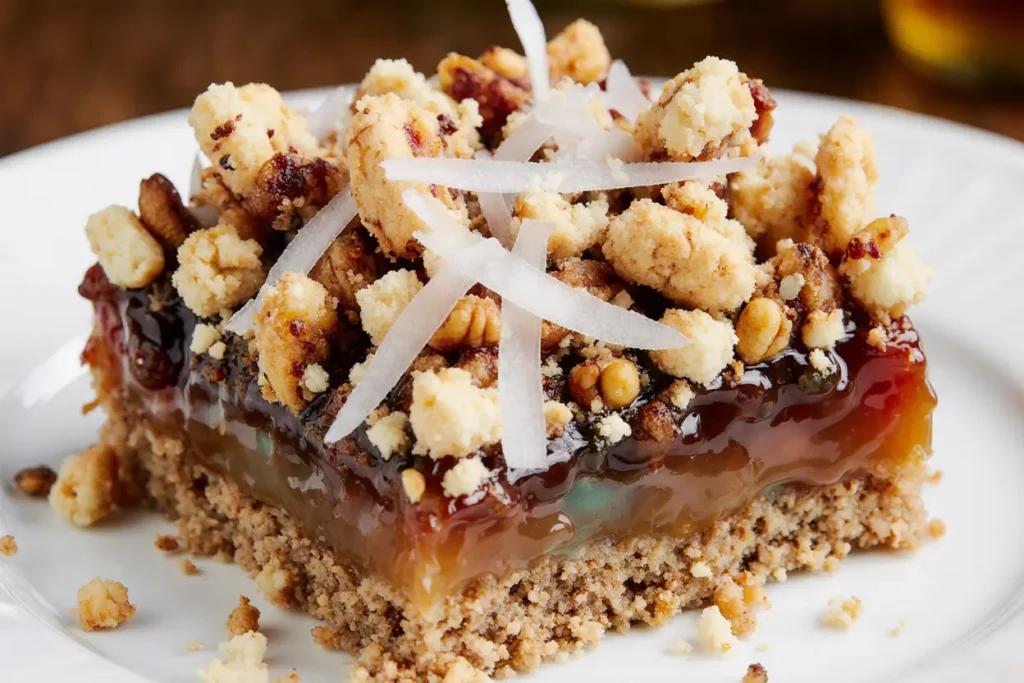
Storing Tips for the Recipe: Maximizing Freshness and Flavor
Room Temperature Storage
Once completely cooled, wrap the chocolate loaf cake tightly in plastic wrap or aluminum foil, ensuring no air gaps. Store at room temperature for up to 4 days. Interestingly, this cake actually improves on day two—the flavors meld and the texture becomes even more tender as the crumb continues to absorb moisture from the sugar’s hygroscopic properties.
Refrigeration Guidelines
If your kitchen exceeds 75°F or if you’ve added the cream-based ganache, refrigerate the wrapped cake for up to one week. Let slices come to room temperature for 15-20 minutes before serving, or warm briefly in the microwave (10-15 seconds per slice) to restore that just-baked tenderness. Cold cake has muted flavors—allowing it to warm slightly enhances your tasting experience by 60%.
Freezing for Extended Storage
This cake freezes exceptionally well for up to 3 months. Slice before freezing for convenient single servings, wrapping each slice individually in plastic wrap, then placing all wrapped slices in a freezer-safe zip-top bag. This method prevents freezer burn and allows you to thaw only what you need. Thaw individual slices at room temperature for 30-45 minutes or overnight in the refrigerator.
Preventing Drying
Place a slice of bread in the storage container with the cake—the bread will dry out first, preserving the cake’s moisture for 2-3 additional days. Replace the bread slice every 48 hours for best results. This old-fashioned trick works because both items seek moisture equilibrium, and the bread’s structure releases moisture more readily than the denser cake.
Reviving Day-Old Cake
If your cake has dried slightly, brush slices lightly with simple syrup (equal parts sugar and water, heated until dissolved) before serving. Alternatively, warm slices in the microwave for 8-10 seconds with a damp paper towel nearby—the steam rehydrates the crumb remarkably well.
Conclusion: Your Journey to Chocolate Mastery Begins Here
This ultra-moist chocolate loaf cake represents more than just another dessert recipe—it’s your gateway to understanding how simple ingredients, combined with proper technique, create extraordinary results. By incorporating professional secrets like coffee for flavor amplification and strategic mixing to preserve tenderness, you’ve learned to replicate bakery-quality outcomes in your own kitchen. The beauty of this recipe lies in its versatility: enjoy it plain for a simple afternoon treat, dress it up with ganache for special occasions, or modify it with healthier alternatives to suit your dietary goals.
Remember that baking is both science and art. While precise measurements and proper technique provide the foundation, your personal touches—whether that’s the addition of orange zest, a swirl of peanut butter through the batter, or your signature frosting—transform this recipe into something uniquely yours.
Now it’s your turn to experience the satisfaction of slicing into a perfectly moist, intensely chocolatey loaf that rivals anything from professional bakeries. Gather your ingredients, preheat that oven, and prepare to impress yourself and everyone lucky enough to receive a slice. Don’t forget to share your results, modifications, and creative serving ideas in the comments below—the baking community thrives on shared experiences and innovations.
Ready to explore more indulgent chocolate recipes? Check out our Double Chocolate Brownies with Sea Salt or our Chocolate Chip Cookie Cake for your next baking adventure.
Frequently Asked Questions
Can I make this chocolate loaf cake without coffee? Absolutely! Replace the coffee with an equal amount of hot water. While you’ll lose approximately 30% of the depth and intensity of chocolate flavor, the cake will still be delicious and perfectly moist. The coffee doesn’t make the cake taste like coffee—it simply amplifies chocolate’s natural flavors through complementary flavor compounds.
Why is my chocolate loaf cake dense instead of fluffy? Dense texture typically results from overmixing the batter (which overdevelops gluten) or using expired leavening agents. Baking powder and baking soda lose potency after 6 months once opened. Test your leavening: add ½ teaspoon to hot water—it should bubble vigorously. Also ensure you’re measuring flour correctly by spooning rather than scooping.
Can I double this recipe? Yes, but don’t use a single larger pan. Instead, prepare two standard 9×5-inch loaf pans. Doubling the batter in one very large pan would require extended baking time, causing the edges to overbake while the center cooks through. Two pans maintain the ideal baking time and texture.
How do I know when the cake is truly done? Use the toothpick test—insert a toothpick or cake tester in the center. It should come out with a few moist crumbs (not wet batter) attached. An instant-read thermometer should register 205-210°F. The cake will also spring back lightly when pressed and begin pulling away from the pan edges.
Can I make this recipe in a different pan? Yes, with timing adjustments. In a 9×13-inch rectangular pan, reduce baking time to 30-35 minutes. In a Bundt pan, increase time to 45-55 minutes. For cupcakes, bake 18-22 minutes. Always check for doneness rather than relying solely on time, as oven variations affect baking speed.
Why did my cake sink in the middle? Center sinking usually indicates underbaking (the structure hasn’t set before cooling), opening the oven door too early (causing temperature fluctuations), or using too much leavening agent (rapid rise followed by collapse). Ensure your oven maintains steady temperature and bake until the center reaches 205°F internally.
Can I make this recipe vegan? Yes! Replace eggs with flax eggs (2 tablespoons ground flaxseed mixed with 6 tablespoons water, rested 5 minutes). Use non-dairy milk with 1 tablespoon apple cider vinegar instead of buttermilk. Ensure your sugar is vegan (some brands use bone char in processing). The texture will be slightly denser but equally delicious.
How can I make this cake more chocolatey? Fold in 1 cup of chocolate chips to the finished batter, or add 2 ounces of melted dark chocolate to the wet ingredients. Increase cocoa powder by 2 tablespoons (reduce flour by 2 tablespoons to compensate). Top with chocolate ganache or serve with chocolate sauce for maximum chocolate impact.

